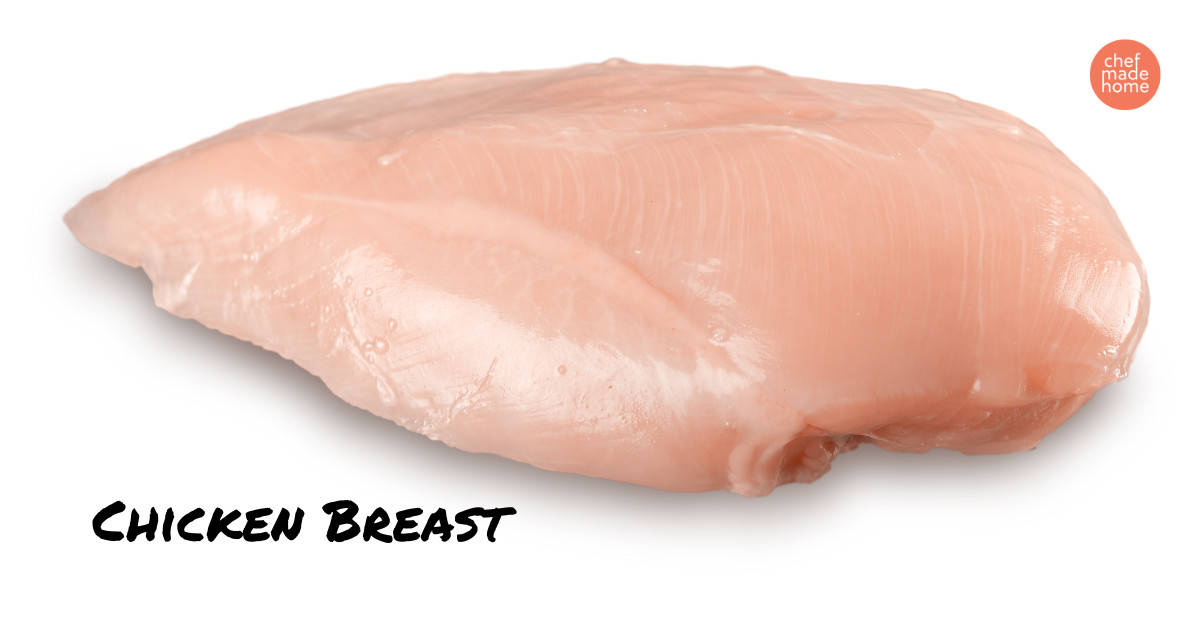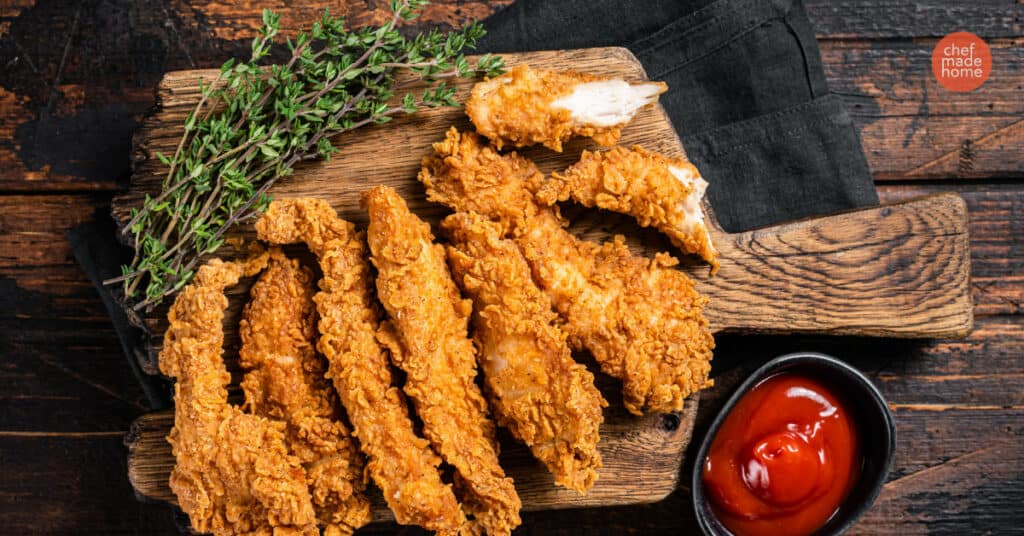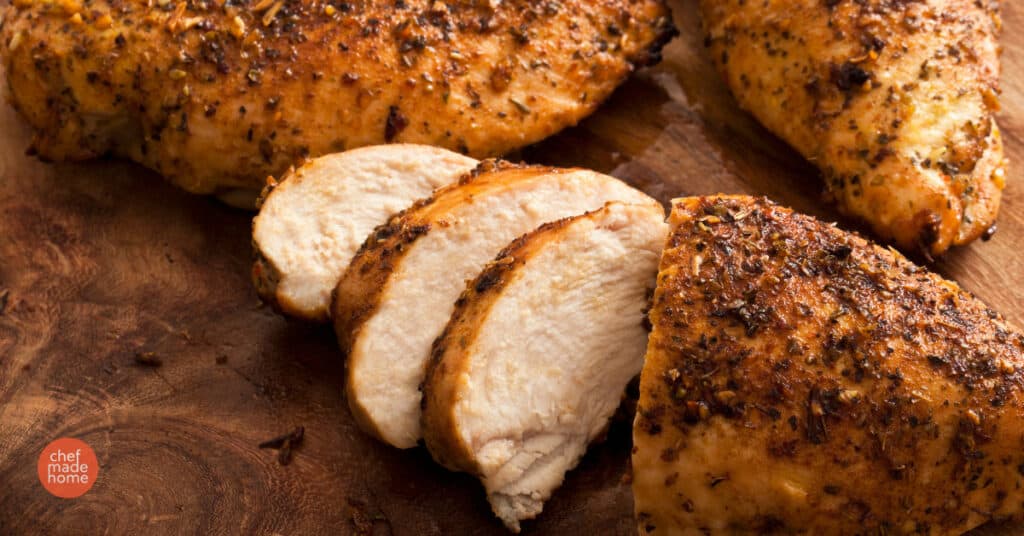SUMMARY: Chicken tenderloin and breast are both popular cuts of chicken, but they differ in texture, taste, and cooking methods. Tenderloin is leaner and petite, ideal for quick cooking methods like stir-frying. At the same time, the breast is larger, juicier, and more versatile for various recipes. Choose tenderloin for a tender and mild flavor or breast for a heartier and more substantial chicken experience.
Are you tired of not knowing whether to use chicken tenderloin or chicken breast in your recipes?
This article will explore the characteristics, benefits, and best use cases for chicken tenderloin and chicken breast. Get ready to dig into the details as we compare these two popular cuts of chicken so you can make informed decisions in your culinary adventures.
Teaser subtopics:
- Characteristics of Chicken Tenderloin
- Characteristics of Chicken Breast
- Benefits and Best Use Cases for Chicken Tenderloin
- Benefits and Best Use Cases for Chicken Breast
Let’s dive in and discover which cut of chicken will best suit your cooking needs!
Characteristics of Chicken Tenderloin
Chicken tenderloin, also known as chicken tenders or tenderloin strips, is a versatile cut offering unique characteristics. Here’s what you need to know about chicken tenderloin:
- Definition and Explanation: Chicken tenderloin refers to the small, thin meat strips beneath the chicken breast. They are often sold separately as a distinct cut.
- Texture, Tenderness, and Taste: Chicken tenderloin is known for its tender and juicy texture. It cooks quickly due to its small size, making it ideal for dishes that require a shorter cooking time. The meat has a mild flavor, which allows it to absorb the flavors of marinades and seasonings well.
- Smaller Size: Compared to chicken breast, chicken tenderloin is smaller. This can be advantageous when portioning meals or making dishes requiring small, bite-sized chicken pieces.
- Versatility in Recipes: Chicken tenderloin can be used in various recipes, from stir-fries and salads to sandwiches and wraps. Its tender nature makes it suitable for quick cooking methods like sautéing, grilling, or pan-frying.
Whether you want to add tenderness to your stir-fry or create a delicious chicken sandwich, chicken tenderloin offers unique characteristics that enhance your culinary creations.

Characteristics of Chicken Breast
Chicken breast is one of the most popular cuts of chicken due to its versatility and lean nature. Here are the key characteristics of chicken breast:
- Definition and Explanation: Chicken breast refers to the fleshy part of the chicken located on the front of the bird, above the ribcage. It is boneless and typically sold as skinless breasts in grocery stores.
- Texture, Tenderness, and Taste: Chicken breast is known for its firm and smooth texture. It is relatively tender and has a mild, neutral taste compared to other cuts. The texture and tenderness of chicken breast make it suitable for various cooking methods, including grilling, baking, and stir-frying.
- Larger Size and Leaner Nature: Chicken breast is larger than chicken tenderloin. It is a lean cut of meat, meaning it contains less fat and lower calorie content. This makes it a popular choice among individuals following a low-fat or calorie-controlled diet.
- Suitability for Specific Cooking Methods: Due to its size and firm texture, chicken breast holds up well to high-heat cooking methods like grilling, searing, and baking. It can be sliced or pounded to an even thickness for more uniform cooking. Chicken breast is often used in recipes like stir-fries, salads, sandwiches, and grilled chicken breast.
When choosing between chicken tenderloin and chicken breast, understanding their characteristics and how they fit into your cooking goals and preferences is essential. The following sections will delve into the benefits and best use cases for both cuts of chicken.

Benefits and Best Use Cases for Chicken Tenderloin
Chicken tenderloin offers several benefits and is well-suited for various cooking scenarios. Here are some of the key advantages and best use cases for chicken tenderloin:
- Nutritional Value: Chicken tenderloin is a good source of lean protein, making it an excellent choice for those seeking to increase their protein intake. It is also low in fat, calories, and carbohydrates, making it a healthier option for those watching their calorie intake or following a specific diet plan.
- Affordability and Availability: Tenderloin is often more affordable than chicken breast. It is readily available in most grocery stores. It can be purchased in bulk, making it a budget-friendly option for cooking larger meals or feeding a crowd.
- Versatility in Recipes: Chicken tenderloin’s smaller size and tender texture make it versatile in various recipes. It can be used in stir-fries, salads, wraps, tacos, kebabs, and even as a substitute for other proteins like shrimp or pork in specific dishes.
- Convenience for Quick and Easy Meals: Chicken tenderloin’s smaller size is convenient for quick and easy meals. It cooks faster than chicken breast, reducing overall cooking time. Its tenderness and size make it well-suited for grilling, pan-searing, and baking, allowing you to prepare flavorful dishes quickly.

When it comes to best use cases, chicken tenderloin shines in the following scenarios:
- Stir-fries and Asian-inspired dishes: Chicken tenderloin’s small size and tenderness make it ideal for stir-frying. It quickly absorbs flavors and cooks evenly, resulting in succulent and flavorful stir-fried dishes.
- Salads and Wraps: The tender texture of chicken tenderloin makes it a great addition to salads and wraps. It can be grilled, roasted, or sautéed to add a protein-rich element to your fresh and healthy creations.
- Kebabs and Skewers: Chicken tenderloin’s smaller size is perfect for threading onto skewers for kebabs. It cooks quickly on the grill or under the broiler, producing delicious, juicy skewers.
- Weeknight Dinners: Due to its quick cooking time and versatility in recipes, chicken tenderloin is an excellent choice for busy weeknight dinners when time is limited.
Consider your preferences, dietary goals, and the specific dish you plan to cook when choosing between chicken tenderloin and chicken breast. The following section will explore the benefits and best use cases for chicken breast.
Benefits and Best Use Cases for Chicken Breast
Chicken breast offers several benefits and is widely used in various culinary applications. Here are some of the key advantages and best use cases for chicken breast:
- Nutritional Value: Chicken breast is a lean source of protein and is low in fat and calories. It is also a good source of essential nutrients like vitamins B6 and B12 and minerals like iron and zinc. Incorporating chicken breast into your diet can support muscle growth, aid in weight management, and provide a range of essential nutrients.
- Potential Health Benefits: Due to its lean nature, chicken breast is often recommended for individuals seeking to reduce saturated fat intake or manage their cholesterol levels. It is also a great source of high-quality protein, which is essential for maintaining and repairing body tissues and supporting a strong immune system.
- Recipes Requiring Lean Poultry: Chicken breast is particularly well-suited for recipes that emphasize the use of lean poultry. It can be used in chicken salads, healthy wraps, sandwiches, and grilled chicken breast recipes. Its neutral taste and firm texture allow it to absorb marinades, spices, and seasonings, resulting in flavorful meals.
- Suitability for Meal Prep and High-Protein Diets: Chicken breast is often popular among individuals who use meal prep or follow high-protein diets. Its larger size and uniform shape make it easier to portion and cook in batches. It can be grilled, baked, or poached in advance and used as a protein source in weekly meals.

When it comes to best use cases, chicken breast is the preferred choice in the following scenarios:
- Grilled Chicken Breast: Grilling chicken breast allows you to achieve a smoky flavor and charred exterior while keeping the inside moist and tender. It is perfect for summer barbecues, backyard gatherings, or a healthy grilled chicken meal.
- Baked Chicken Breast: Baking chicken breast results in juicy, flavorful meat with a golden crust. It can be seasoned with herbs, spices, or marinades before being baked to perfection. Baked chicken breast is versatile and can be used in various recipes, from simple dinners to more elaborate dishes.
- Meal Prep and Batch Cooking: Chicken breast is often used for meal prep or batch cooking due to its larger size. You can cook a large batch of seasoned chicken breasts and portion them in salads, wraps, bowls, or as a protein component in other weekly meals.
- High-Protein Diets and Fitness Goals: Chicken breast is popular among individuals following high-protein diets or aiming to meet their fitness goals. Its high protein content supports muscle growth, recovery, and satiety, making it an excellent choice for those seeking to increase their protein intake.
Consider the specific requirements of your recipe or dietary goals when choosing between chicken tenderloin and chicken breast. The concluding section will summarize the critical points discussed in this article and provide guidance for selecting the most suitable option.

Key Takeaways: Chicken Tenderloin vs Chicken Breast
When comparing chicken tenderloin vs chicken breast, both cuts have unique characteristics, benefits, and best use cases. By understanding their differences, you can make informed choices based on your preferences and cooking goals. Here are the key takeaways from this article:
- Chicken Tenderloin:
- Chicken tenderloin offers a tender and flavorful experience due to its texture and taste.
- It is smaller than chicken breast, making it suitable for specific recipes.
- The versatility of chicken tenderloin allows for a wide range of culinary possibilities.
- With its convenience and affordability, chicken tenderloin is an excellent choice for quick and easy meals.
- Chicken Breast:
- Chicken breast is known for its lean and larger size, making it a popular choice for health-conscious individuals.
- Its texture, tenderness, and taste suit various cooking methods.
- Chicken breast offers significant nutritional benefits, including a good source of high-quality protein.
- It is an ideal option for meal prep and high-protein diets.
In summary, whether you prefer the tenderness and versatility of chicken tenderloin or chicken breast’s leaner nature and nutritional benefits, the decision ultimately relies on your individual preferences. Consider incorporating both cuts into your culinary adventures to experience the full range of flavors and possibilities chicken offers.
FAQ’s
Are chicken tenderloins and chicken tenders the same thing?
Chicken tenderloins and tenders are commonly used interchangeably, referring to the small, tender, and elongated muscle beneath the chicken breast. They are the same cut of meat.
Can I use chicken tenderloin instead of chicken breast in a recipe?
Yes, you can often substitute chicken tenderloin for chicken breast in recipes. However, remember that chicken tenderloin cooks faster than chicken breast due to its smaller size, so adjust cooking times accordingly.
How should I store chicken tenderloin and chicken breast?
Store chicken tenderloin and chicken breast in a sealed container or plastic bag in the refrigerator to ensure freshness. Use them within two to three days or freeze them for longer-term storage.
Can I use chicken breast instead of chicken tenderloin in a recipe?
Certainly! Chicken breast can be used as a substitute for chicken tenderloin. However, cooking times may need to be adjusted to compensate for the larger and potentially longer cooking duration.
Can I air fry chicken tenderloin?
Absolutely! Chicken tenderloin is well-suited for air frying. Its smaller size and tender nature make it a perfect candidate for this cooking method. Keep an eye on the cooking time, as air-frying chicken tenderloin may be shorter.
Can I mix chicken tenderloin with chicken breast in a recipe?
Certainly! Mixing chicken tenderloin with chicken breast in a recipe can combine textures and flavors. Ensure that each cut’s cooking times are adjusted accordingly to prevent any overcooking or undercooking.
What are some good substitutions for chicken tenderloin and chicken breast?
If you’re looking for alternatives to chicken tenderloin, consider using chicken thighs or chicken drumsticks. You can try chicken cutlets or boneless skinless chicken thighs for chicken breast substitutes. Remember that these substitutions may alter the texture and flavor of the dish.

